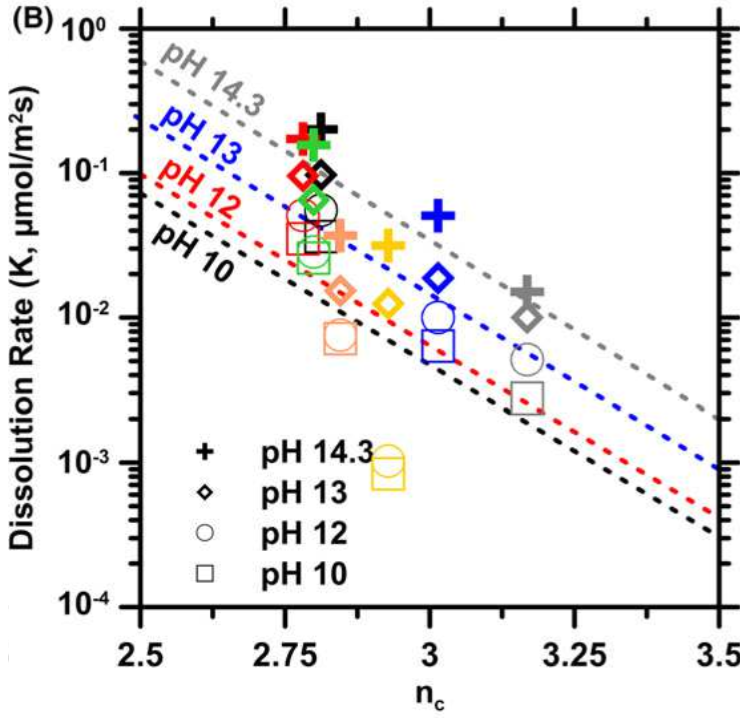Citation
Oey, T.; Kumar, A.; Pignatelli, I.; Yu, Y.; Neithalath, N.; Bullard, J.W.; Bauchy, M.; Sant, G. Journal of the American Ceramic Society 2017, 100(12), 5521-5527.
Oey, T.; Kumar, A.; Pignatelli, I.; Yu, Y.; Neithalath, N.; Bullard, J.W.; Bauchy, M.; Sant, G. Journal of the American Ceramic Society 2017, 100(12), 5521-5527.
Fly ash which encompasses a mixture of glassy and crystalline aluminosilicates is an abundant supplementary cementitious material (SCM), valuable for replacing ordinary portland cement (OPC) in the binder fraction in concrete. Because higher OPC replacement levels are desired, it is critically important to better understand and quantify fly ash reactivity. By combining molecular dynamics (MD) simulations and vertical scanning interferometry (VSI), this study establishes that the reactivity of the glassy fractions in a fly ash with water (i.e., their aqueous dissolution rate) is controlled by the number of constraints placed on atoms within the disordered aluminosilicate network. More precisely, an Arrhenius‐like dependence of dissolution rates on the atomic network topology is observed. Such topological controls on fly ash reactivity are highlighted for a range of U.S. commercial fly ashes spanning CaO‐enriched and SiO2‐enriched compositions. The structure‐property relationships reported herein establish an improved framework to control and estimate fly ash‐cement interactions in concrete.
